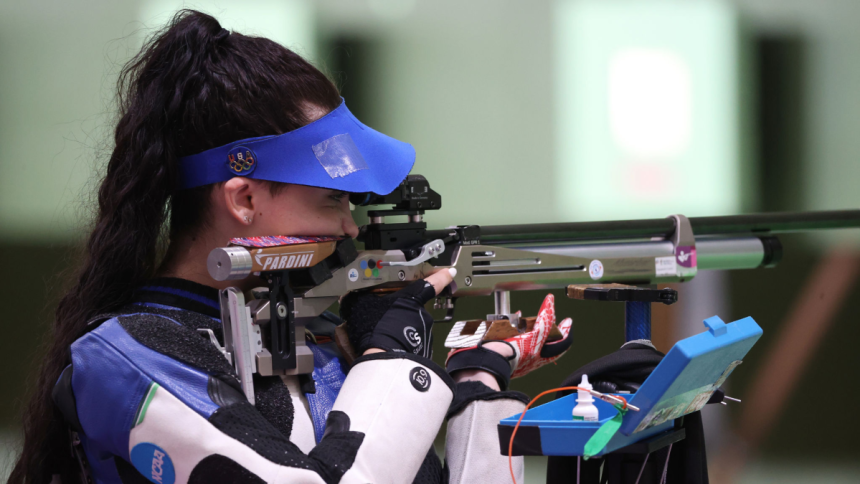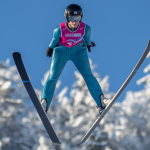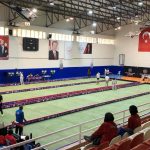Shooting sports are competitive or recreational activities that involve the use of firearms, airguns, bows, or other projectile-launching devices to test accuracy, precision, and skill. These sports are governed by strict rules and safety protocols and are practiced at various levels, from local clubs to international competitions. Shooting sports have a significant presence in the global sports market due to their historical roots, technical complexity, and widespread appeal.
Key Categories of Shooting Sports:
- Rifle Shooting:
- Includes disciplines like 10m Air Rifle, 50m Rifle Prone, and 50m Rifle Three Positions (standing, kneeling, prone). These events are featured in the Olympics and other major competitions.
- Pistol Shooting:
- Involves events such as 10m Air Pistol, 25m Rapid Fire Pistol, and 50m Pistol. These require precision and control, often under time constraints.
- Shotgun Shooting:
- Includes Trap, Skeet, and Double Trap, where participants shoot at clay targets launched into the air. These events are popular in both Olympic and non-Olympic competitions.
- Archery:
- While not involving firearms, archery is often grouped with shooting sports. It includes Target Archery, Field Archery, and 3D Archery, using bows to hit stationary or moving targets.
- Long-Range Shooting:
- Involves shooting at targets over distances of 300 meters or more, often using high-precision rifles. Popular in military and civilian competitions.
- Action Shooting:
- Includes dynamic disciplines like IPSC (International Practical Shooting Confederation) and IDPA (International Defensive Pistol Association), where participants navigate courses and engage multiple targets under time pressure.
- Biathlon:
- A winter sport that combines cross-country skiing and rifle shooting, testing both physical endurance and marksmanship.
- Airgun Sports:
- Involves shooting with air rifles or air pistols, often at shorter distances. These are popular for training and recreational purposes due to their lower cost and accessibility.
- Historical and Recreational Shooting:
- Includes activities like cowboy action shooting, black powder shooting, and recreational target shooting, often emphasizing historical reenactment and fun.
Reasons for Popularity in the Global Sports Market:
- Historical and Cultural Significance:
- Shooting sports have deep historical roots, dating back to hunting and military training. Many cultures have a strong tradition of marksmanship, which has carried over into modern sports.
- Olympic and International Recognition:
- Shooting sports have been part of the Olympic Games since their modern inception in 1896. Events like the ISSF World Championships and Commonwealth Games further elevate their profile.
- Skill and Precision:
- Shooting sports require a high level of focus, discipline, and technical skill, appealing to individuals who enjoy mastering complex techniques and equipment.
- Accessibility and Inclusivity:
- Shooting sports can be practiced by people of all ages, genders, and physical abilities. Adaptive shooting programs also make the sport accessible to individuals with disabilities.
- Safety and Regulation:
- Strict safety protocols and regulations ensure that shooting sports are conducted responsibly, making them appealing to participants and spectators alike.
- Community and Camaraderie:
- Shooting clubs and organizations foster a strong sense of community, with members often sharing knowledge, equipment, and experiences. This camaraderie is a key driver of participation.
- Technological Innovation:
- Advances in firearm and archery technology, such as precision optics, ergonomic designs, and advanced materials, enhance the appeal of shooting sports and attract tech enthusiasts.
- Competitive and Recreational Appeal:
- Shooting sports offer both competitive and recreational opportunities, catering to a wide range of interests. From local club matches to international tournaments, there is something for everyone.
- Media and Sponsorship:
- Major shooting events are broadcast globally, attracting sponsorships from firearm manufacturers, outdoor brands, and other related industries. This media exposure helps grow the sport’s popularity.
- Self-Defense and Practical Skills:
- Many participants are drawn to shooting sports for the practical skills they develop, such as self-defense, hunting, and situational awareness.
- Youth Development Programs:
- Organizations like 4-H, Scouts, and junior shooting clubs introduce young people to shooting sports, fostering interest and talent from an early age.
- Economic Impact:
- The shooting sports industry generates significant revenue through the sale of firearms, ammunition, gear, and event hosting. It also supports jobs in manufacturing, retail, and training.
Economic Impact and Market Growth:
- Equipment Sales: The global market for firearms, airguns, bows, and related accessories is worth billions of dollars, driven by both sports and recreational shooting.
- Event Revenue: Major competitions like the Olympics, ISSF World Championships, and national tournaments generate revenue through ticket sales, sponsorships, and broadcasting rights.
- Tourism: Shooting events attract participants and spectators from around the world, boosting local economies through travel, lodging, and dining.
- Training and Education: Shooting ranges, training courses, and certification programs contribute to the industry’s growth and provide employment opportunities.
In Summary:
Shooting sports are a popular and growing segment of the global sports market, appealing to a diverse audience due to their historical significance, technical complexity, and inclusivity. Their emphasis on skill, precision, and safety, combined with strong community support and media exposure, ensures their continued relevance and growth. As technology advances and interest in outdoor and precision sports increases, shooting sports are likely to remain a key player in the global sports landscape.















